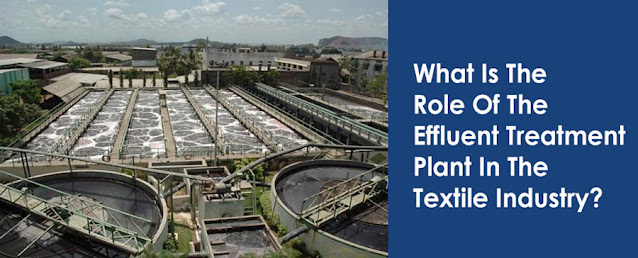What is the role of the Effluent Treatment Plant in the Textile Industry?
Recycled water from the effluent comes from chemical and textile industries with the help of several operations including flocculation, coagulation, aerations, and filtration techniques commonly reverse osmosis. The Effluent generate has a high level of COD, BOD, pH, TDS, and color material. This study consists of the effluent characteristics and making of process flow Effluent Treatment Plant Textile Industry sheet after visiting several locations in industrial areas.
Points of optimization
examined in several unit operations included considering the entire price
experienced while the complete process. It was examined that the automation and
highly substantive usage of dyes while coloration levels in a textile mill
reduce the effluent amount generated. The effect of several mesh sizes of
coagulating agents is studied in the conjugation mixing speed. It was focused
that the polyphosphazene membranes usage at the place of polyamides for the RO
plants, as they possess better withstanding at high temperature and pH.
Now, the question arises
what is the nature of Effluent Treatment
Waste produced in the
textile industry is importantly based on water-based effluent produced in
several processes. The textile industry creates an intricate large volume of
wastewater including several chemicals used in printing, dyeing, and finishing
processes. Many dyes are the reasons behind intensive color in the wastewater.
The effluent produced in several steps or the processes is well-elsewhere the
standard and hence, it is highly polluted as well as dangerous.
Water Consumption in
Textile Processing
The production of textile
goods includes weaving/knitting, spinning (yarn to fabric), chemical
processing, as well as textile manufacturing. The popular water consumption
takes place in the biochemical textiles processing. Water is needed for
preparing the fabric dyeing, printing, and finishing operations as well as
rinsing operations and machine cleaning.
Major usages of water in
the textile industry
·
Water treatment plant (reject stream, reproduction, and washing of
demineralization, periodic cleaning of RO plant, softener plant, a backwash of
media filters)
·
Stream production (boiler feed water)
·
Domestic purposes and humidification
·
Cooling (processing machine as well as a cooling tower)
Importance of Effluent
Treatment Plant on Textile Industries
Effluent Treatment Plant is
the most effective as well as technically innovative treatment system that is
designed for treating effluent or waste produced from several establishments
such as industries and etc. The several Effluent Treatment Plant components
will completely depend on the effluent characteristics that depend on the type
of effluent is to be processed. There are several types of Effluent Treatment
Plant are available to depend on the quantity and quality of the effluent.
The textile industry
produces a vast volume of wastewater that depends greatly on containing and
composition several chemicals that are used in printing, dyeing, and several
other processes. Discharging of unprocessed effluent from the textile
industries is harmful to the natural environment that causes pollution to
nearby soil and water as well. To overcome this issue, and Effluent Treatment
Plant has an essential role in garment or textile industries by safeguarding
the environment from the harmful effect of wastewater.
Top 5 advantages of
Effluent Treatment Plant for the Textile Industry:
Effluent Treatment Plant
excellent lessens the damage that is done to the environment and which in
results in advantages for the industry. There are various advantages of
Effluent Treatment Plant which are mentioned below.
·
It helps to recycle and turns wastewater into clean as well as
safe usable water
·
It ensures you in compliance with environmental terms and
conditions
·
It helps to lessen waste from your premises/establishment
·
Properly maintained Effluent Treatment Plant saves your money in
the long term
·
It is helpful while removing unsafe contaminants/pollutants hence
effective to the environment
The unprocessed textile wastewater from several sections includes high levels of dyes, TSS, chemicals, metal toxicants, and BOD, that should be processed before they are going to discharge into the environment. When wastewater goes via the Effluent Treatment Plant, pollutants are eliminated and the water quality genuinely improved to a standard /acceptance level that allows for the final discharge to the environment without any risk. If you are looking for the best and efficient Effluent Treatment Plant in India then, Clear Ion Experts is the only answer as you will get the best plant as per your requirements at a very reasonable rate.
Source Url: https://clear-ion.com/blog/what-is-the-role-of-the-effluent-treatment-plant-in-the-textile-industry/




Comments
Post a Comment